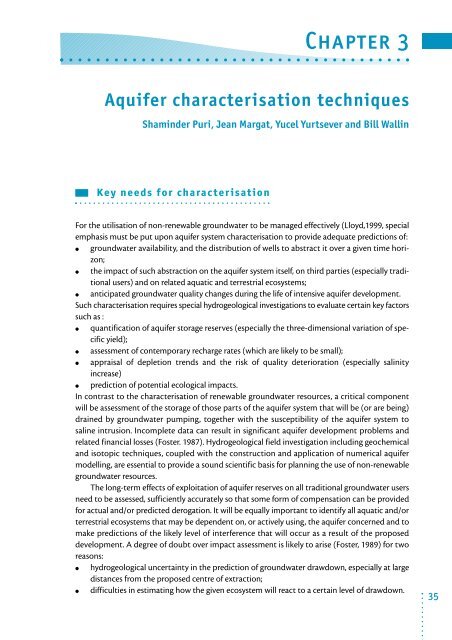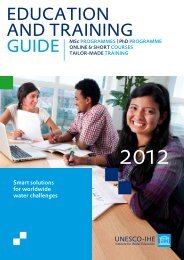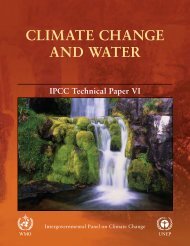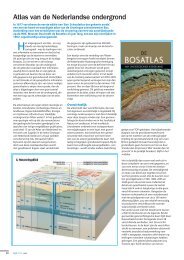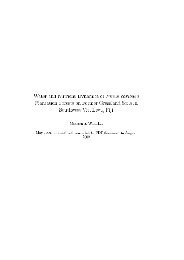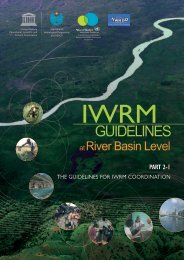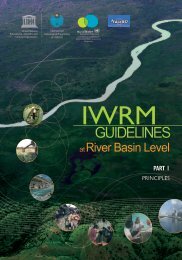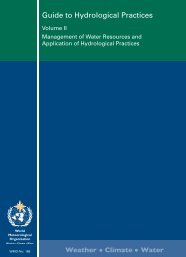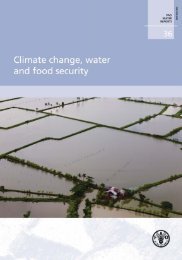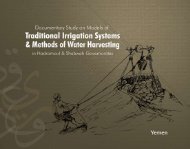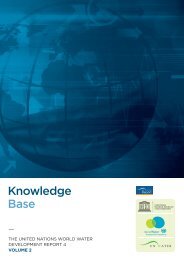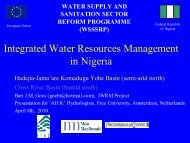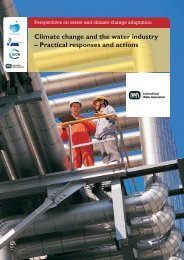Non-renewable groundwater resources: a ... - unesdoc - Unesco
Non-renewable groundwater resources: a ... - unesdoc - Unesco
Non-renewable groundwater resources: a ... - unesdoc - Unesco
- No tags were found...
Create successful ePaper yourself
Turn your PDF publications into a flip-book with our unique Google optimized e-Paper software.
Chapter 3Aquifer characterisation techniquesShaminder Puri, Jean Margat, Yucel Yurtsever and Bill WallinKey needs for characterisationFor the utilisation of non-<strong>renewable</strong> <strong>groundwater</strong> to be managed effectively (Lloyd,1999, specialemphasis must be put upon aquifer system characterisation to provide adequate predictions of:● <strong>groundwater</strong> availability, and the distribution of wells to abstract it over a given time horizon;● the impact of such abstraction on the aquifer system itself, on third parties (especially traditionalusers) and on related aquatic and terrestrial ecosystems;● anticipated <strong>groundwater</strong> quality changes during the life of intensive aquifer development.Such characterisation requires special hydrogeological investigations to evaluate certain key factorssuch as :● quantification of aquifer storage reserves (especially the three-dimensional variation of specificyield);● assessment of contemporary recharge rates (which are likely to be small);● appraisal of depletion trends and the risk of quality deterioration (especially salinityincrease)● prediction of potential ecological impacts.In contrast to the characterisation of <strong>renewable</strong> <strong>groundwater</strong> <strong>resources</strong>, a critical componentwill be assessment of the storage of those parts of the aquifer system that will be (or are being)drained by <strong>groundwater</strong> pumping, together with the susceptibility of the aquifer system tosaline intrusion. Incomplete data can result in significant aquifer development problems andrelated financial losses (Foster. 1987). Hydrogeological field investigation including geochemicaland isotopic techniques, coupled with the construction and application of numerical aquifermodelling, are essential to provide a sound scientific basis for planning the use of non-<strong>renewable</strong><strong>groundwater</strong> <strong>resources</strong>.The long-term effects of exploitation of aquifer reserves on all traditional <strong>groundwater</strong> usersneed to be assessed, sufficiently accurately so that some form of compensation can be providedfor actual and/or predicted derogation. It will be equally important to identify all aquatic and/orterrestrial ecosystems that may be dependent on, or actively using, the aquifer concerned and tomake predictions of the likely level of interference that will occur as a result of the proposeddevelopment. A degree of doubt over impact assessment is likely to arise (Foster, 1989) for tworeasons:● hydrogeological uncertainty in the prediction of <strong>groundwater</strong> drawdown, especially at largedistances from the proposed centre of extraction;● difficulties in estimating how the given ecosystem will react to a certain level of drawdown.35


